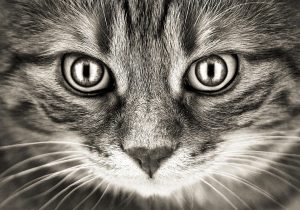
Cats, with their enigmatic personalities and graceful agility, have been cherished companions for centuries. However, ensuring their health and happiness goes beyond providing food, shelter, and love. One of the most effective ways to enhance a cat’s well-being is through play. Playtime is not just an enjoyable activity; it’s a crucial aspect of feline health. In this article, we’ll explore various playtime techniques that can help your cat thrive, ensuring a joyful and fulfilling life.
Understanding the Importance of Play
Play is an essential part of a cat’s life. It mimics hunting behaviors, provides physical exercise, and stimulates mental engagement. Without adequate play, cats can become bored, stressed, and may even develop behavioral issues. Regular playtime helps in:
- Physical Health: Active play helps maintain a healthy weight, improves cardiovascular health, and strengthens muscles and joints.
- Mental Stimulation: Interactive play challenges a cat’s mind, helping them stay sharp and alert.
- Bonding: Play strengthens the bond between cat and owner, fostering trust and affection.
- Behavioral Benefits: Engaging play can reduce unwanted behaviors such as scratching furniture or excessive meowing.
Choosing the Right Toys
Not all toys are created equal, and different cats have different preferences. Here are some popular options and tips on choosing the right toys for your feline friend:
- Interactive Toys: Toys such as feather wands or laser pointers encourage your cat to chase and pounce, mimicking hunting behaviors.
- Catnip Toys: Many cats enjoy toys filled with catnip, which can stimulate play and excitement. However, not all cats are affected by catnip, so observe your cat’s reaction.
- Puzzle Toys: These toys challenge your cat’s mind by requiring them to solve a puzzle to get a treat. They are excellent for mental stimulation.
- Ball Toys: Simple ball toys can provide endless entertainment as they are batted around by your cat.
Creating a Play Schedule
Consistency is key when it comes to playtime. Establishing a play schedule can help ensure your cat gets regular exercise and mental stimulation. Here’s how to create an effective play schedule:
- Frequency: Aim for at least two play sessions a day, ideally in the morning and evening, when cats are most active.
- Duration: Each play session should last between 10-15 minutes. Shorter, more frequent sessions are often more effective than longer, less frequent ones.
- Variety: Rotate toys and activities regularly to keep your cat engaged and prevent boredom.
Interactive Play Techniques
Playing with your cat is a wonderful opportunity to bond and ensure they get the exercise they need. Here are some interactive play techniques:
- Feather Wands: Move the wand in unpredictable patterns to mimic the movements of prey. Allow your cat to catch the “prey” occasionally to keep them engaged.
- Laser Pointers: Never shine the laser directly in your cat’s eyes. Use it to engage your cat in a chase, and finish the play session with a tangible toy to catch.
- Hide and Seek: Hide behind furniture and peek out to encourage your cat to seek you out. This game stimulates their curiosity and hunting instincts.
Encouraging Independent Play
While interactive play is important, encouraging independent play is also beneficial. This ensures your cat stays active even when you’re not available. Here are some tips:
- Self-Play Toys: Invest in toys that your cat can play with on their own, such as balls or track toys.
- Cat Trees and Scratching Posts: Provide structures for climbing and scratching. These not only offer exercise but also satisfy natural instincts.
- Window Perches: Set up a perch by a window so your cat can watch birds and other outdoor activities. This can be mentally stimulating and entertaining.
Safety Considerations
While playtime is essential, it’s important to ensure it’s conducted safely. Here are some safety tips to keep in mind:
- Check Toys Regularly: Inspect toys for wear and tear. Discard any toys that have broken parts or could pose a choking hazard.
- Safe Environment: Ensure that the play area is free from hazards such as sharp objects or small items that could be swallowed.
- Supervised Play: Always supervise interactive play sessions, especially with strings or ribbons, to prevent accidental ingestion.
Understanding Your Cat’s Signals
Cats communicate in subtle ways, and understanding their signals can enhance playtime. Here’s what to watch for:
- Body Language: A cat that is ready to play may have dilated pupils, a wagging tail, or a crouched position.
- Vocalizations: Chirps or trills often indicate excitement and readiness to engage.
- Overstimulation: If your cat becomes aggressive or starts biting, it may be a sign of overstimulation. Pause the play session and allow your cat to calm down.
Play for Different Life Stages
Cats of different ages have varying play needs. Tailor playtime activities to suit their life stage:
- Kittens: Kittens have boundless energy and require frequent play sessions to burn off energy and develop coordination.
- Adult Cats: Adult cats might prefer more strategic play that involves stalking and pouncing. Interactive toys are particularly effective.
- Senior Cats: Older cats may not be as agile, but they still enjoy gentle play. Use toys that encourage light exercise without overexertion.
Incorporating Training into Play
Playtime is a great opportunity to incorporate training, enhancing your cat’s skills and behaviors. Here are some ideas:
- Clicker Training: Use a clicker to reward your cat for specific behaviors during play, such as fetching a toy.
- Target Training: Teach your cat to follow a target, such as a stick with a ball at the end, and reward them for successful actions.
Conclusion
Mastering playtime techniques is a rewarding endeavor that significantly contributes to the health and happiness of your cat. By understanding your cat’s preferences, providing a variety of toys and activities, and ensuring a safe play environment, you can unleash the joy that comes with an active and engaged feline. Remember, playtime is not just a luxury; it is a necessity for a thriving cat.
#ChatGPT assisted in the creation of this article.







